Despite spending hours drafting the perfect email copy and creating a stellar design, your email marketing ROI remains subpar. You're missing opportunities and struggling with sluggish growth—like shooting in the dark.
Table of Contents
- What is B2B email marketing?
- B2C vs B2B email marketing: Key differences
- A step-by-step guide to B2B email marketing
- Wrapping up
Here’s the truth: B2B buyers are busier than ever. They’re also subjected to a barrage of cold emails and marketing messages every. single. day.
How can you stand out in your prospects’ flooded inboxes? With an airtight B2B email marketing strategy.
In this article, we’ll break down the most important steps for creating a high-impact email marketing campaign to bring conversions.
But first, let’s get down to the basics.
What is B2B email marketing?
B2B email marketing uses email as the primary channel of the marketing funnel to build awareness, create interest, and drive conversions for your business. Email offers a personal channel for interacting with prospective customers. B2B marketers can create email campaigns to educate and nurture leads, ultimately nudging them toward conversion.
B2C vs B2B email marketing: Key differences
Here’s a summary of the biggest difference between B2C and B2B email marketing:
| Parameter | B2B emails | B2C emails |
| Content Depth | Longer and contain more resources, like whitepapers, reports, or case studies. | Shorter and more engaging, with lots of visual context around the message. |
| Sales Cycle | Align directly with the sales cycle and focus more on nurturing leads. | Directly target purchase intent, and marketing campaigns aren’t very lengthy. |
| Personalization | Rely heavily on personalization since prospects are overwhelmed with generic messages that don't catch their attention. | Personalized based on the user's behavior and interactions with a brand rather than their personal preferences. |
| Email Design | Often have a more professional and clean design, focusing on clarity and information. | Often have a more vibrant and visually appealing design to create an emotional connection quickly. |
| CTA | Have a clear CTA to move the conversation forward—like requesting a demo, signing up for a webinar, etc. | Directly nudge readers to buy or get a discount for purchase. |
| Metrics of Success | Often focuses on metrics like lead generation, conversion rates, and ROI. | Often focuses on metrics like click-through rates, open rates, and overall sales. |
A step-by-step guide to B2B email marketing
Now that we have enough context around B2B email marketing let's break down the steps to create your email campaign from scratch—without leaving any loose ends. It is also recommended to have a professional business email address in advance for maintaining a credible and trustworthy image in the corporate world. By setting up a business email, you ensure that your recipients perceive your emails as coming from a legitimate and reputable source.
1. Build an effective B2B email list from multiple sources
First things first, set up workflows to create and expand your email list. Building an email list gives you qualified leads who have interacted with your brand and have some interest in knowing more about you.
Instead of sending emails to cold leads who don’t know anything about your brand, use these tactics to continuously capture more emails for your list:
- Strategic prospecting on LinkedIn: Use LinkedIn to gain visibility among your target audience and nudge them to subscribe to your email list. You can do this by organically posting content or promoting your posts through ads. What’s more, you can create lead lists on LinkedIn with the advanced search parameters available on the platform. Then export these leads to your preferred email tools,
- Website opt-ins: Leverage different touch points across your website to collect emails. You can add the subscribe form in the footer, in blogs, and on pop-ups. You can also add these to exit intent modals.
Here’s an example from Hotjar’s website footer.
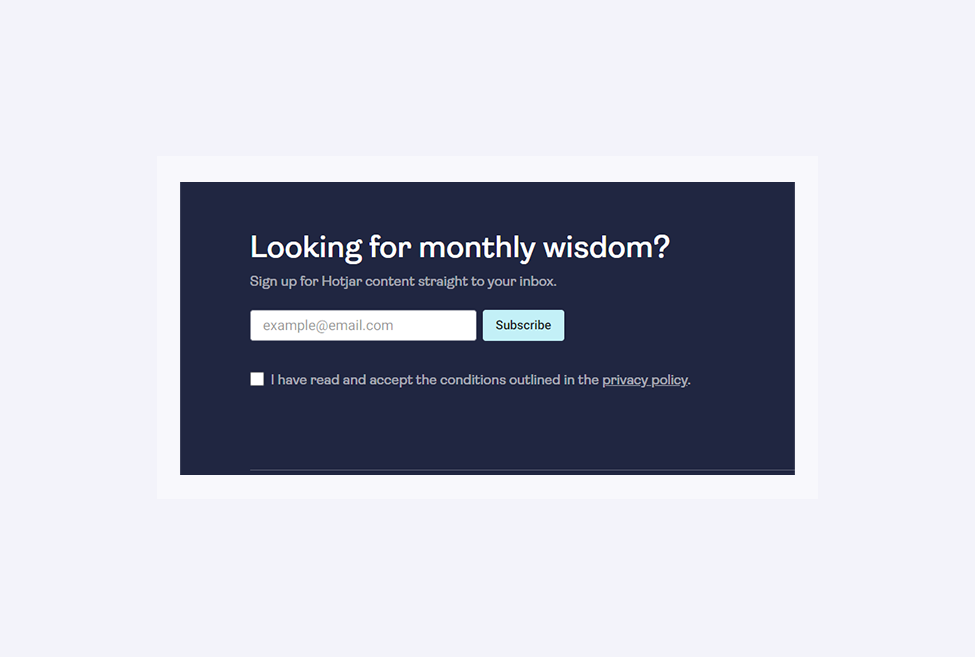
- Lead magnets: Gated resources or lead magnets are a surefire way to collect emails. Share value-packed content like eBooks, templates, webinars, and similar resources. Create a dedicated landing page giving a highlight of each resource and add a lead capture form to collect emails.
Here’s how Darwinbox uses an industry report as a lead magnet to collect emails and other essential details.
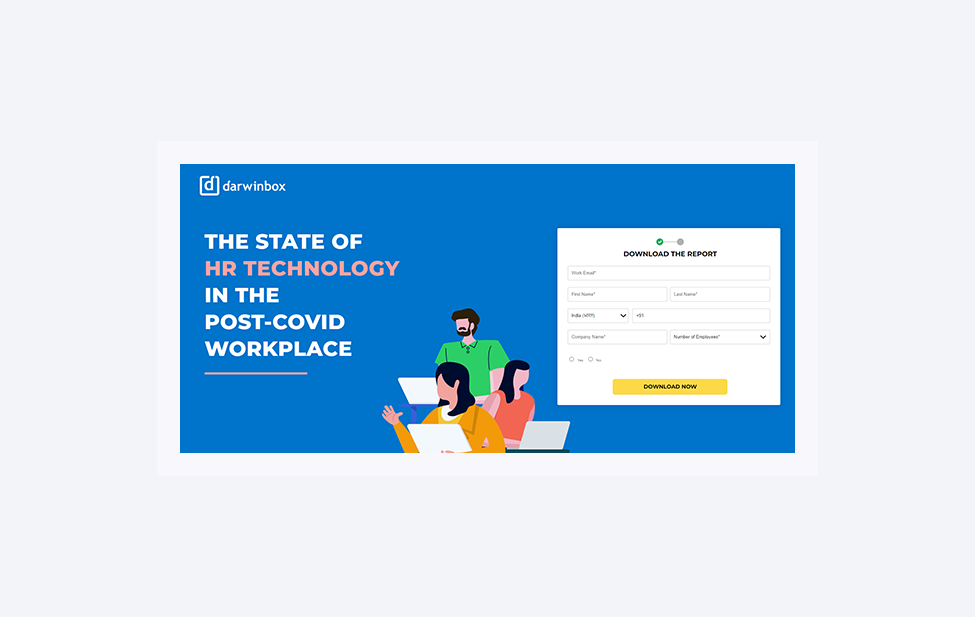
Networking events: Industry events and forums offer another great tactic to expand your email list. You can share your contact in exchange for others' emails. You can also sponsor events and get the email list of all the attendees. Doing this for relevant events can bring in hyper-targeted leads.
Keep in mind that building an email list is not a one-and-done task. You have to constantly optimize your marketing campaigns and existing tactics to bring more engaged prospects into the funnel.
2. Segment and personalize your email list
A McKinsey study shows that high-growth companies generate 40% more revenue from personalization than their low-growth counterparts. This data paints a clear picture of why personalization matters for B2B email marketing.
If you’re not sure how to segment and personalize your email campaigns, follow these proven practices to get started:
- Quality data collection: Prioritize quality over quantity to collect insights about your prospects’ industry, job role, company size, pain points, and expected solutions.
- Segment your emails: Define meaningful and research-backed segments to divide your email list. This can be based on multiple factors like location, existing tech stack, company size, pain points, engagement, etc.
Here are some insights on the parameters you can use to segment your lists:
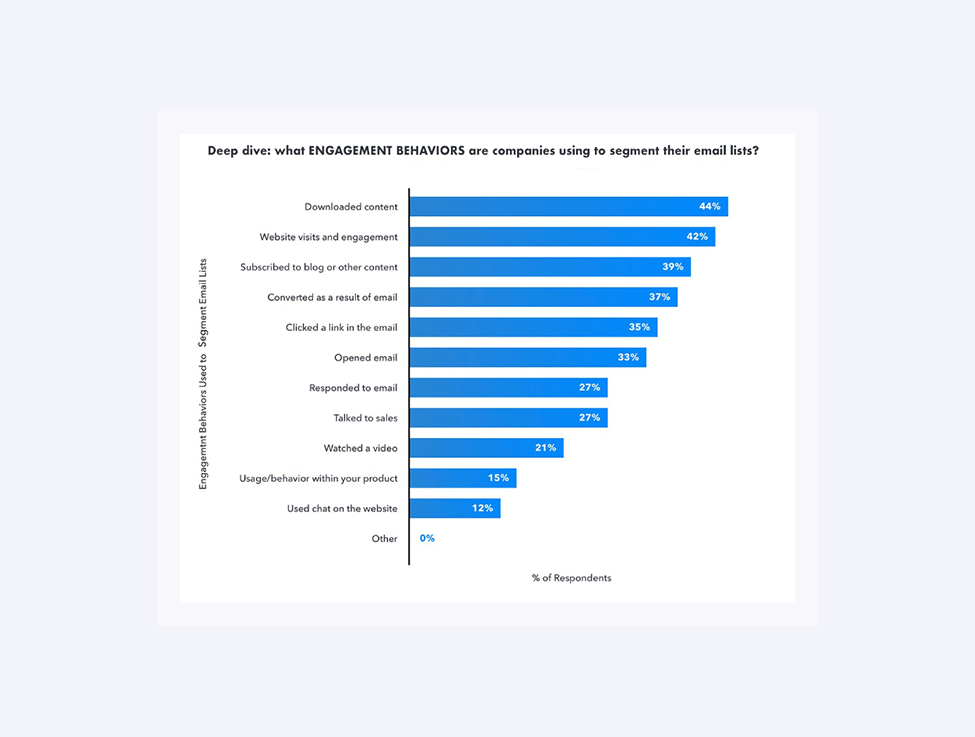
- Create personalized content: The next step is to always create multiple versions of the same email tailored to each segment. Go beyond skin-deep personalization, where you're just changing the recipient's name. Create different versions for every segment's preferences.
- Test and optimize: Perform A/B testing to find the best-performing elements in each email. This can include email design, subject lines, color palette, personalization placement, etc.
The key to effective personalization is making it sound natural and meaningful. Don't try to force-fit it or add artificial language for the sake of personalizing your emails.
Crafting compelling B2B email campaigns
Now it’s time to get down to business and create your campaigns from start to finish. We’ve sourced the best practices to plan convincing email campaigns that move the needle for your business. Let’s take a look:
- Nail your objectives: Before everything else, define what you want to achieve from a campaign and pick your metrics as well. Invest enough effort in this process to ensure you're moving forward in the right direction. Strong marketing proposals can help set clear objectives and align your strategy effectively.
- Create strong messaging: Use clear language that resonates with your audience to capture their attention. Pay special attention to getting the messaging right for communicating your value propositions effectively.
- Design responsive emails: Increase your chances of getting a response by creating mobile-friendly designs. Adapt your email design to multiple screen sizes and remove friction for the prospect.
- Clear and convincing CTAs: Whether you’re inviting people to download a resource or asking them to request a demo, make your CTAs stand out with prominent visuals.
Irrespective of the type of emails you’re creating, it always helps to add social proof to your messages. Include reviews anywhere in the email to win credibility for your brand.
Here’s a great email example by Zapier with great copywriting and visual appeal:
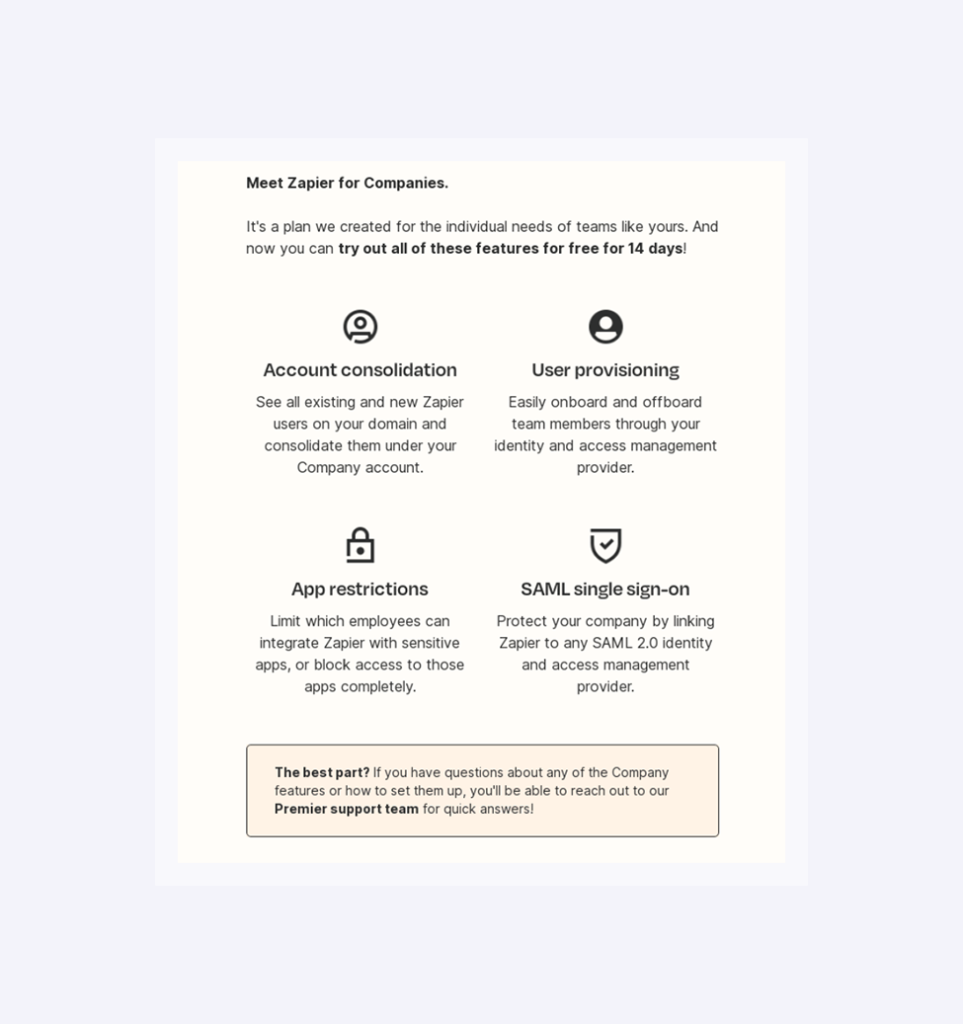
4. Implement effective B2B email automation
Once you’ve completed all the above steps, set up automation to run the entire campaign seamlessly! Start by mapping out the customer journey where you know all their touch points with your brand.
Then you can set up automated email sequences for welcoming new subscribers. These drip campaigns let you send a series of scheduled emails according to predefined triggers. You just need to create and schedule these emails; the automation flows will handle everything else!
Automation is particularly helpful for nurturing B2B leads. Instead of manually following up with leads every few days, you can automate the process and send them personalized messages based on their engagement level.
But here’s the catch: setting up automated workflows for email marketing can seem like too much busy work.
Not anymore! With a powerful solution like Elastic Email, you can automate your email campaigns in a jiffy. The platform is purpose-built to power your email marketing goals. You can create beautiful and responsive emails and then put them on auto-pilot using this tool.
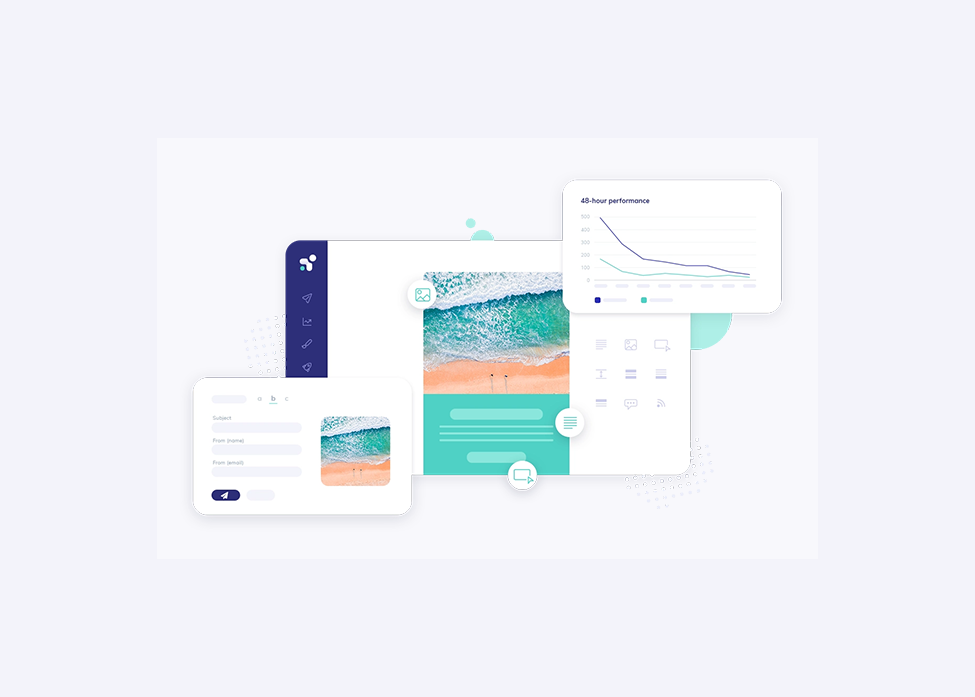
Not just that, Elastic Email also has a powerful API to let you integrate its capabilities with your current set-up and use it seamlessly. It also offers email verification functionality to maintain a healthy sender reputation and maximize your email deliverability rates.
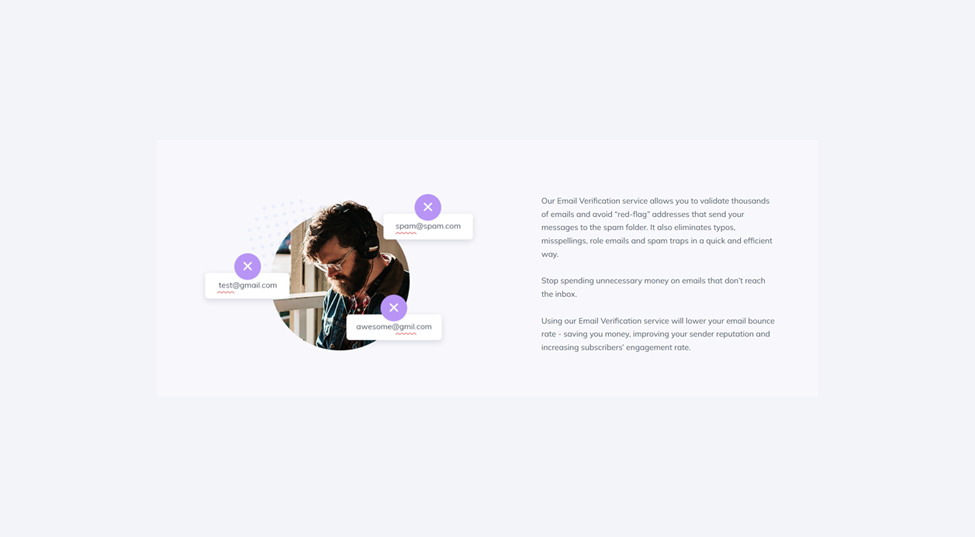
5. Nurture and convert leads through email
Lead nurturing is an essential part of any sales campaign in the B2B world. If you want to drive conversions via email, create nurturing sequences to proactively engage and educate subscribers over time, encouraging them to buy from you.
You can use lead scoring to segment high-value and low-value leads. Then customize your lead nurturing emails for prospects in both segments. You can also segment leads based on acquisition sources and create different campaigns to nurture social media leads.
While segmenting your audience, collect critical data about their behavior, interests, expectations, demographics, etc. This will set you up for creating persuasive and high-impact emails for both segments.
Here are some more tips to boost the ROI from your nurturing campaigns:
- Use behavioral data to create contextual emails with deeper personalization.
- Customize the ai lead nurturing journey according to prospects’ responses to the emails you send.
- Automate nurturing emails by creating triggers based on users’ engagement with your emails and your nurturing journey map.
- Keep your emails focused on educating your prospects and building credibility rather than sounding promotional or pushy.
Here’s a lead nurture email from Saga. They send this email to every new user once the user has started interacting with their free product. This email is crisp and super readable. You can also find a CTA to learn more and interact with other users on Saga’s Discord channel.

6. Measure, analyze, and optimize
The final step is the oldest trick in the book: measuring the results. For example, running email marketing for your gym, salon, or spa without measuring and analysis is like running through a maze blindfolded. You’re going to hit a wall sooner than later!
As a best practice, you should define the most critical metrics for your objectives and track them proactively. Use this data to make crucial decisions about optimizing your emails.
For example, if you’re tracking open rates and see poor numbers, focus on improving your subject lines and preview text to intrigue your prospects and make them open your emails. Alternatively, if your deliverability rate is below par, you have to analyze your sender reputation and domain health to optimize deliverability.
Map each metric to a goal and define best practices to optimize your email infrastructure as per the results. If your goal is to acquire leads from LinkedIn for email marketing, then track the number of leads you’re adding to your list weekly or monthly.
Wrapping up
Many people consider email marketing a goldmine for B2B businesses—and for good reason. Email gives you a strong channel to connect with potential customers and engage them throughout the marketing funnel (and post-purchase). Unlike social channels or SEO, email isn't subjected to algorithm updates.
So, if you use these tactics to build a robust email pipeline, you’re all set to drive leads and boost your bottom line directly from this channel. Bookmark this guide to actively work on setting up email as a marketing channel and reap the rewards in the long run.







